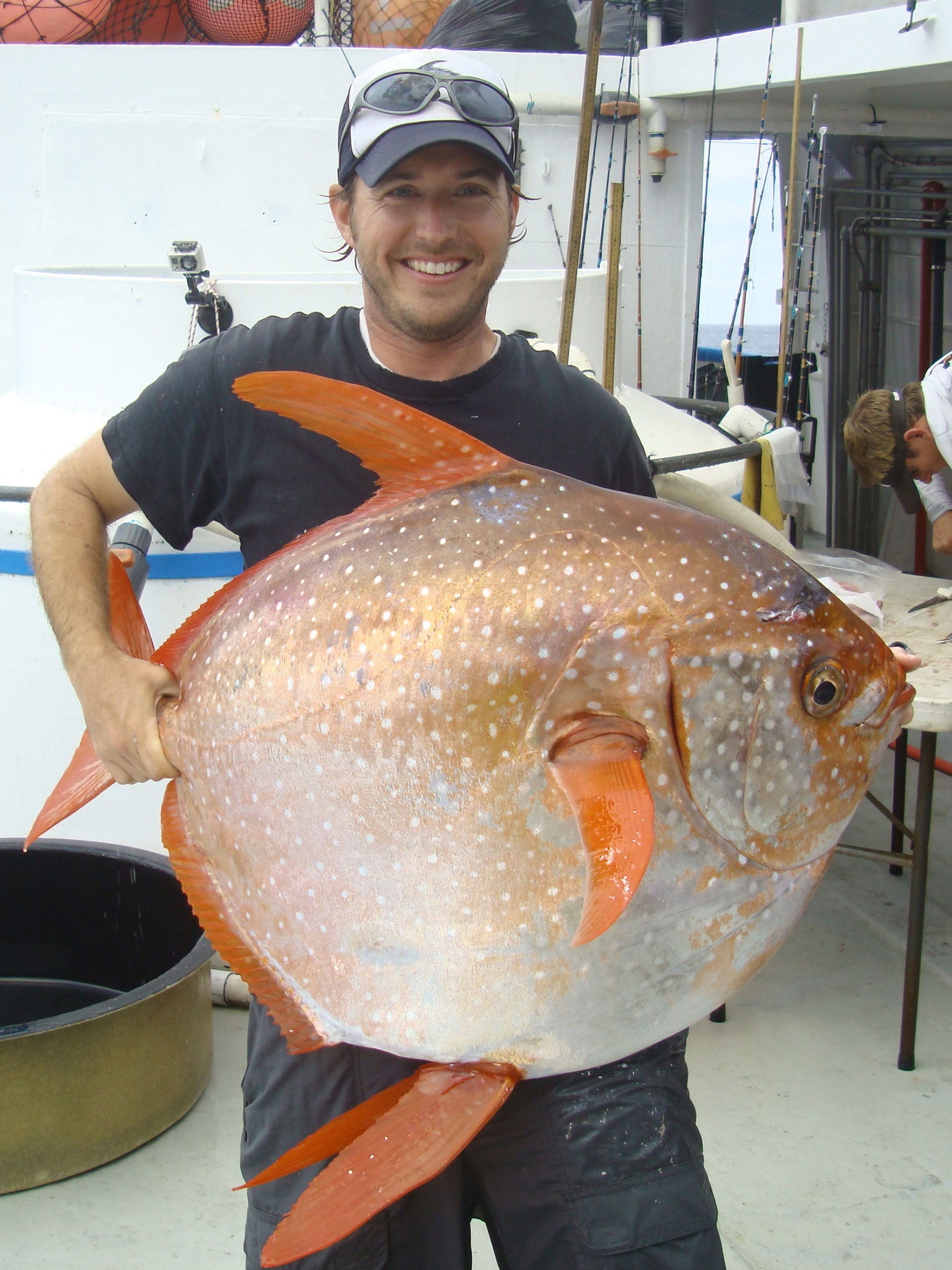Moonfish: Why the opah's unique warm-blooded circulation rewrites the textbook
It turns out not all fish are cold-blooded

Your support helps us to tell the story
From reproductive rights to climate change to Big Tech, The Independent is on the ground when the story is developing. Whether it's investigating the financials of Elon Musk's pro-Trump PAC or producing our latest documentary, 'The A Word', which shines a light on the American women fighting for reproductive rights, we know how important it is to parse out the facts from the messaging.
At such a critical moment in US history, we need reporters on the ground. Your donation allows us to keep sending journalists to speak to both sides of the story.
The Independent is trusted by Americans across the entire political spectrum. And unlike many other quality news outlets, we choose not to lock Americans out of our reporting and analysis with paywalls. We believe quality journalism should be available to everyone, paid for by those who can afford it.
Your support makes all the difference.As any school biology student will tell you, all fish are cold-blooded. But it seems the textbooks may have to be rewritten after the discovery by scientists of an exception to the rule in the form of the opah, or moonfish.
The creature has been found to circulate heated blood throughout its body, making it the first known fully warm-blooded fish – and a first-rate predator.
Some fish, such as tuna and some sharks, warm parts of their bodies – their muscles, for example – to help them swim, but that’s as far as the heating system goes.
However, with its all-over body heating, the silvery, tyre-sized opah has a distinct competitive advantage over rival predators when it comes to securing its next meal, according to researchers from NOAA Fisheries in California.
The opah lives hundreds of feet beneath the surface, in chilly, dimly lit waters, where fish tend to be slow and sluggish, conserving energy by ambushing prey instead of chasing it.
It swims by rapidly flapping its large, red pectoral fins like wings through the water, and can be found all over the world – even, on occasion, in seas around the British Isles.
The researchers have just finished a new study, published in the journal Nature, which finds the opah’s constant flapping of its fins heats its body, speeding its metabolism. This helps it to swim faster, react more quickly and see more sharply.
“Before this discovery, I was under the impression this was a slow-moving fish, like most other fish in cold environments,” said Nicholas Wegner, of NOAA Fisheries’ Southwest Fisheries Science Center, in La Jolla, California. “But because it can warm its body, it turns out to be a very active predator that chases down agile prey like squid, and can migrate long distances.”
Mr Wegner said he first realised the moonfish was different when he analysed a sample of its gill tissue and saw it had unusual qualities. The blood vessels that carry warm blood into the fish’s gills wind around those carrying cold blood back to the body core after absorbing oxygen from the water.
This is known in engineering as “counter-current heat exchange”, where it is used to regulate temperatures – for example in chemical processing. Resembling a car radiator, it’s a natural adaptation that conserves heat.
The opah uses the technique to ensure that warm blood leaving the body core helps heat up cold blood returning from the respiratory surface of the gills, where it absorbs oxygen.
“There has never been anything like this seen in a fish’s gills before,” said Mr Wegner. “This is a cool innovation by these animals that gives them a competitive edge. The concept of counter-current heat exchange was invented in fish long before we thought of it.”
The researchers collected temperature data from opah caught during surveys off the West Coast of the US, finding that their body temperatures were regularly warmer than the surrounding water.
Researchers also attached temperature monitors to the fish as they tracked them on dives to several hundred feet, and found that their body temperature remained steady even as the water temperature dropped sharply.
The fish had a muscle temperature about 5C above the surrounding water while swimming about 150ft to 1,000ft below the surface, the researchers found.
“Discoveries like this help us understand the role species play in the marine ecosystem, and why we find them where we do,” said Francisco Werner, director of the Southwest Fisheries Science Center.
“It really demonstrates how much we learn from basic research out on the water, thanks to curious scientists asking good questions about why this fish appeared to be different.”
Temperature Regulation
Warm-blooded creatures, such as mammals, birds and, it turns out, the opah fish, keep the inside of their bodies at a constant temperature by generating their own heat.
They do this by converting much of the food they eat into energy, with only a relatively small amount converted into body mass. In hot environments they can cool off by sweating, panting, moulting, bathing, licking or resting.
Cold-blooded animals, such as reptiles, amphibians, and almost all fish, take on the temperature of their surroundings. They are much more active in warm environments and very sluggish when their surroundings are cold. Their muscle activity depends on chemical reactions which run quickly when it is hot and slowly when it is cold.
Cold-blooded animals often bask in the sun to warm up and boost their metabolism.
The main advantage that these cold-blooded creatures have is that they need much less energy to survive – but the advantage for animals of having warm blood is that they can keep moving whatever the ambient temperature.
Join our commenting forum
Join thought-provoking conversations, follow other Independent readers and see their replies
Comments